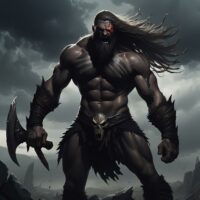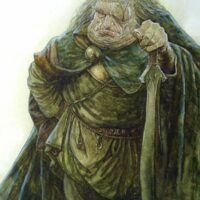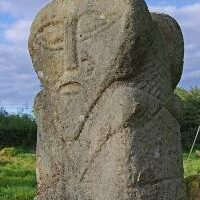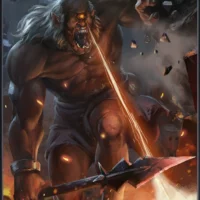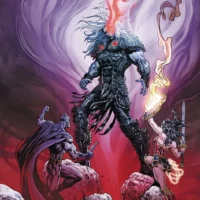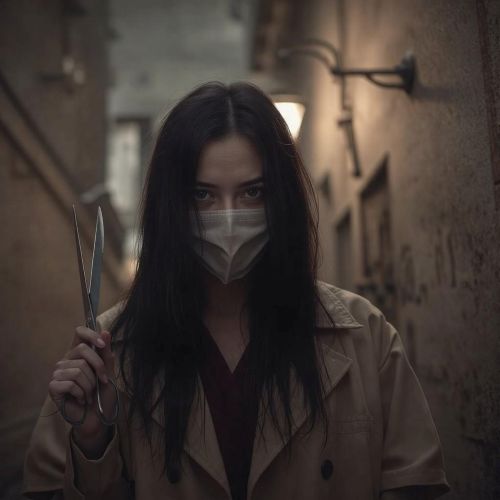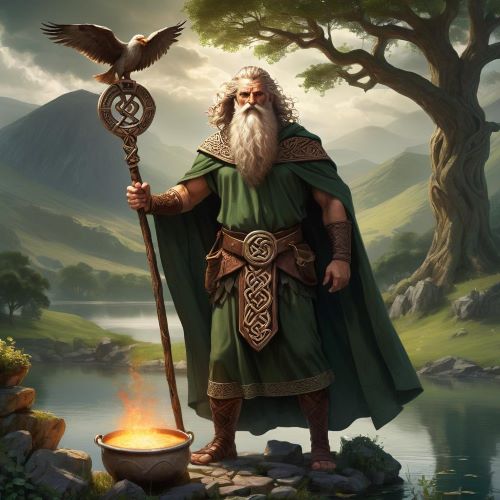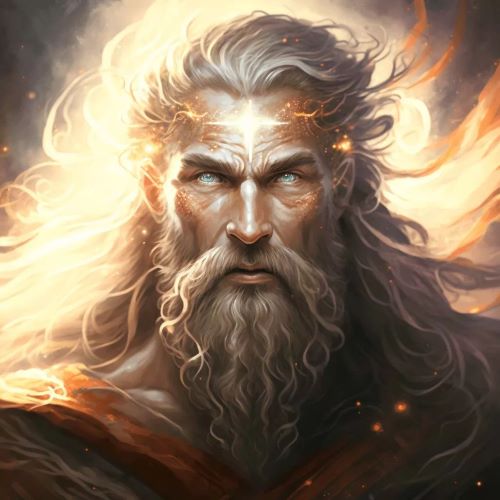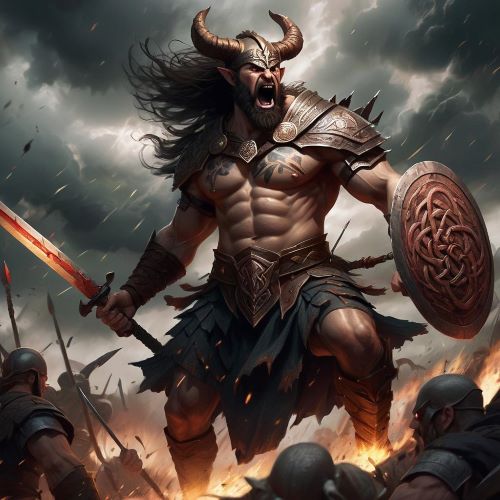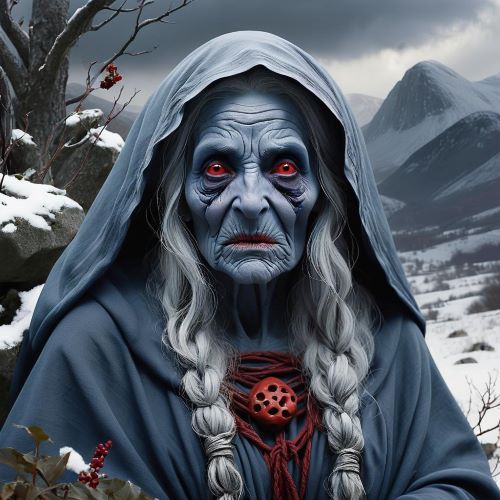Balor : The One Eyed Giant
Listen
At a glance
| Description | |
|---|---|
| Origin | Celtic Mythology |
| Classification | Gods |
| Family Members | Dot (Father), Neit (Grandfather), Ethnea (Daughter) |
| Region | Ireland |
| Associated With | Strength, Size, War |
Balor
Introduction
Balor, synonymous with monstrous power and a terrifying gaze, looms large in Celtic mythology. He embodies destruction, leading the Fomorians, a race of malevolent giants, against the benevolent Tuatha Dé Danann. As a leader of the Fomorians, Balor is often depicted as a giant with a large eye that wreaks havoc when opened. His story is primarily known from the tale where he is killed by his grandson Lugh of the Tuatha Dé Danann. Balor is sometimes interpreted as a personification of the scorching sun. This fearsome figure stands as one of the most formidable and intriguing characters in Irish lore. His legacy endures not only in ancient texts but also in modern cultural references, reflecting his lasting impact on Celtic mythology.
Physical Traits
Balor is depicted as a giant of terrifying proportions, embodying the raw and untamed power of the natural world. One of his most distinguishing features is his single, immense eye in the middle of his forehead, possessing a destructive power so great it can decimate armies and lay waste to entire landscapes with a mere glance. Some myths describe the eye as being so large and heavy that it requires multiple attendants to lift the eyelid.
His imposing presence is further accentuated by descriptions of his monstrous visage and formidable stature, embodying both physical strength and the fear he inspires in enemies and his own people. This deadly eye, often referred to as the “Evil Eye” or the “Eye of Death,” varies in description: sometimes constantly open, wreaking havoc on everything it sees, and other times kept shut under heavy eyelids, unleashed only in moments of dire need. Some sources portray Balor as a twelve-foot-tall winged humanoid with horns and demonic features, underscoring his role as a symbol of chaos and destruction in Celtic mythology.
Family
Balor’s family lineage is enveloped in mystery and tragedy. According to some sources, he descends from the mythical sea god Nemed, with Dot as his father and Néit as his grandfather, while others claim Buarainech as his father. His daughter, Ethnea, becomes pivotal in the prophecy foretelling his demise. To avert this fate, Balor imprisons Ethnea in a fortress, but fate intervenes when she becomes involved with Cian, leading to the birth of Lugh, who fulfills the prophecy.
Balor’s familial ties are as intricate as his character. He is married to Cethlenn, a powerful sorceress, and they have several children, though his relationship with his grandson, Lugh, holds the most mythological significance. Prophecy shapes Balor’s narrative. Foretold to be killed by his grandson, Balor tries to prevent this by imprisoning his daughter, Ethniu. Despite his efforts, Ethniu bears triplets with Cian. Balor orders their deaths, but Lugh survives, raised in secret. Eventually, Lugh confronts and defeats Balor in a dramatic battle, fulfilling the prophecy. The sources vary on Balor’s lineage, with conflicting accounts of his father and wife, but they agree on his ultimate fate at the hands of Lugh.
Other names
Balor is recognized by an array of names and epithets, reflecting his diverse nature and the extensive reach of his myth. Often called “Balor of the Evil Eye” or “Balor of the Strong Blows,” these titles highlight his fearsome eye and formidable strength. Additionally, he is referred to as “Balor of the Mighty Blows” in certain texts, emphasizing his prowess in battle. These epithets not only underscore Balor’s physical attributes but also his role as a symbol of destruction and a formidable adversary. They contribute to the sense of dread and reverence he commands within the mythological tradition.
The name Balor may derive from Common Celtic *Boleros, meaning “the flashing one.” Early literature also presents him as Balor Béimnech (Balor the smiter), Balor Balcbéimnech (Balor the strong smiter), Balor Birugderc (Balor of the piercing-eye), Balor mac Doit meic Néid (Balor, son of Dot son of Nét), or Balor ua Néit (Balor, grandson of Nét). Later forms include Balor Béimeann or Balar Bemen, and Balór na Súile Nimhe (Balor of the Evil Eye). Balor’s formidable reputation earned him various titles in Celtic mythology, with the most common being Balor of the Evil Eye, which speaks volumes about his destructive power. Other names include Balor Balcbéimeann, highlighting his immense strength, and Balor son of Buarainech, reflecting his lineage in certain versions of the myth.
Powers and Abilities
Balor’s legendary powers solidify his status as one of the most feared beings in Celtic mythology. His lethal eye stands out as his most notable ability, capable of unleashing devastating energy that can obliterate armies and landscapes. Often requiring multiple men to lift its eyelid, this eye symbolizes the immense destructive potential it holds. Alongside his deadly gaze, Balor possesses remarkable strength and combat skills, fitting for a giant and warrior king. Additionally, he wields dark sorcery and malevolent magic inherited from his Fomorian heritage, making him a formidable adversary feared by both mortals and gods. These powers not only serve as tools of destruction but also symbolize his dominion over chaos and disorder, instilling fear and terror on the battlefield. However, his end comes in the Second Battle of Mag Tuired, where despite his hesitation due to prophecy, he unleashes his devastating eye. Lugh, his grandson, cunningly uses a sling and a specially crafted stone to strike Balor’s open eye, bringing about his instant demise. Balor’s death marks a pivotal moment, leading to the ultimate defeat of the Fomorians and the dominance of the Tuatha Dé Danann in Ireland.
Modern Day Influence
Balor’s influence stretches far beyond ancient texts and oral traditions, finding resonance in contemporary culture and media. His story has sparked numerous adaptations in literature, film, and video games, showcasing his enduring appeal as a symbol of formidable power and fearsome authority. In literature, Balor often features as a central antagonist in retellings of Irish myths, symbolizing the triumph of order over chaos. Contemporary fantasy novels reimagine his mythological traits for modern audiences, exploring themes of prophecy, power, and the struggle between good and evil.
In film and television, characters embodying Balor’s attributes—giants with deadly eyes, powerful sorcerers, and fearsome kings—reflect his mythological essence across diverse genres, from historical dramas to fantasy epics. Video games integrate Balor’s story and abilities into immersive gameplay experiences, with characters inspired by him often serving as formidable bosses or antagonists, challenging players with their immense power and destructive capabilities.
Beyond entertainment, Balor’s influence extends to cultural festivals and artistic expressions celebrating Celtic heritage. His story is retold in plays, artworks, and performances, keeping the myth alive and relevant for contemporary audiences. Moreover, Balor’s impact transcends popular culture, offering insights into the human condition. Themes of the unknown, rage, vengeance, and the struggle against fate resonate with audiences, serving as cautionary tales about the consequences of unchecked power and the importance of wisdom and courage.
Balor’s legacy is also evident in modern popular beliefs, with his representation as a feared giant and the symbolism of his evil eye continuing to captivate and resonate with audiences. Additionally, WWE superstar Finn Balor’s adoption of Balor’s unique body paint, created in collaboration with spray paint artist Orlando Pagan, further demonstrates the enduring influence of Balor in contemporary culture.
Related Images
Frequently Asked Questions
What is lorem Ipsum?
I am text block. Click edit button to change this text. Lorem ipsum dolor sit amet, consectetur adipiscing elit. Ut elit tellus, luctus nec ullamcorper mattis, pulvinar dapibus leo.
What is lorem Ipsum?
I am text block. Click edit button to change this text. Lorem ipsum dolor sit amet, consectetur adipiscing elit. Ut elit tellus, luctus nec ullamcorper mattis, pulvinar dapibus leo.
What is lorem Ipsum?
I am text block. Click edit button to change this text. Lorem ipsum dolor sit amet, consectetur adipiscing elit. Ut elit tellus, luctus nec ullamcorper mattis, pulvinar dapibus leo.
What is lorem Ipsum?
I am text block. Click edit button to change this text. Lorem ipsum dolor sit amet, consectetur adipiscing elit. Ut elit tellus, luctus nec ullamcorper mattis, pulvinar dapibus leo.
What is lorem Ipsum?
I am text block. Click edit button to change this text. Lorem ipsum dolor sit amet, consectetur adipiscing elit. Ut elit tellus, luctus nec ullamcorper mattis, pulvinar dapibus leo.

